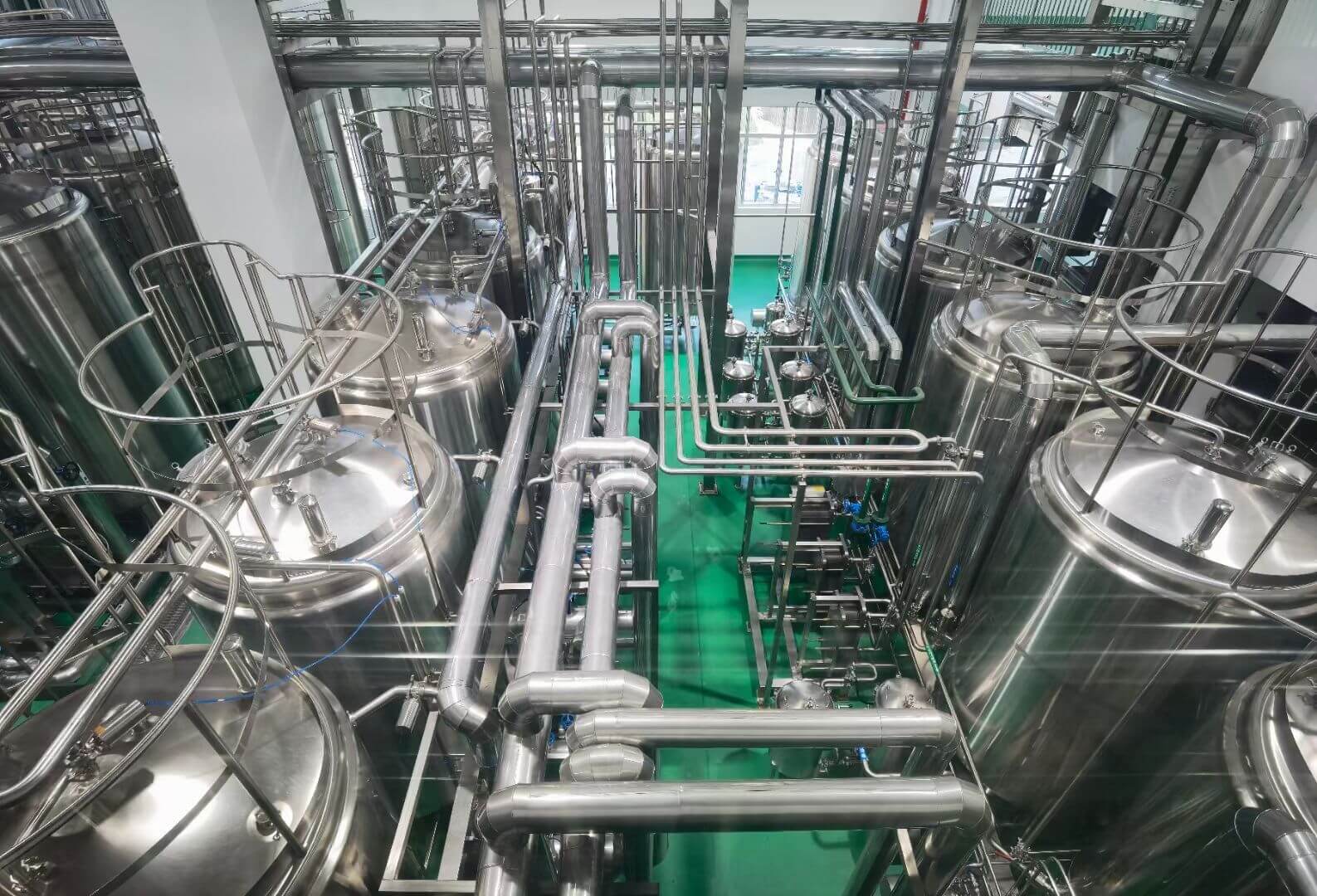
Harvesting:The first step is to harvest the leaves of the Stevia rebaudiana plant. The leaves contain the steviol glycosides, which are responsible for the sweet taste.
Drying:After harvesting, the leaves are dried to reduce their moisture content. This helps in preserving the quality of the leaves during storage and transportation.
Crushing or grinding: The dried leaves are crushed or ground into smaller particles, increasing the surface area for the extraction process.

Extraction:There are several methods for extracting steviol glycosides from the crushed leaves. Some common methods include:
Filtration:After the extraction process, the liquid extract undergoes filtration to remove any remaining plant material and impurities, leaving a more concentrated solution of steviol glycosides.
Purification:The concentrated extract may still contain other compounds alongside the steviol glycosides, so further purification is necessary. Various purification techniques, such as chromatography, ion exchange, or precipitation, are used to separate and isolate the steviol glycosides.


Concentration: The purified steviol glycosides are then concentrated to increase their sweetness. This step reduces the volume of the final product, making it more efficient for storage and transportation.
Drying and crystallization: The concentrated extract is dried, and the steviol glycosides are crystallized to obtain a pure form of stevia sweetener. This powder or liquid is the final stevia extract ready for use as a natural sweetener in various food and beverage products.

The tank is equipped with CIP cleaning automatic rotating spray ball, temperature gauge, pressure gauge, explosion-proof sightglass lamp, sight glass, quickopening feeding port, etc., to ensure easy operation and meet GMP standards. The inner cylinder of the equipment is made of 304 and 316L.
| Series technical parametes | TQ-1 | TQ-2 | TQ-3 | TQ-4 | TQ-5 | TQ-6 |
| Volume(L) | 1200 | 2300 | 3200 | 6300 | 8500 | 11000 |
| Tank design pressure (MPA) | 0.09 | 0.09 | 0.09 | 0.09 | 0.09 | 0.09 |
| Compressed air pressure (MPA) | 0.3 | 0.3 | 0.3 | 0.3 | 0.3 | 0.3 |
| Feed port diameter (mm) | 400 | 400 | 400 | 500 | 500 | 500 |
| Heating area (m²) | 3 | 4.7 | 6 | 7.5 | 9.5 | 12 |
| Condensation area (m²) | 4 | 4 | 5 | 5 | 8 | 10 |
| Coling area (m²) | 1 | 1 | 1 | 2 | 2 | 3 |
| Filtration area (m²) | 3 | 3 | 3 | 5 | 5 | 6 |
| Slag gate area (m²) | 800 | 800 | 800 | 1000 | 1000 | 1000 |
| Energy consumption (kg/h) | 245 | 325 | 345 | 645 | 720 | 850 |

JNBAN vacuum belt dryers have been included in the“ Eleventh Five-Year National Science and Technology Support Program, Zhejiang Science and Technology Department Major Science and Technology Public Relations Project and Zhejiang Province” Major Science and Technology Special (Priority Theme) Social Development Project. There are 4 papers and 6 patent applications accepted, including 4 invention patents, 2 special authorizations, and 10 practical patents. They won the third prize of Zhejiang Science and Technology Progress Award and the first set of products in Zhejiang Province.……

Wenzhou Jinbang Light Industry Machinery Co., Ltd. is a high-tech enterprise integrating R & D, manufacturing and sales. Professional in the production and sales of pharmaceutical, bioengineering machinery and equipment professional enterprises. The company mainly specializes in consulting, scheme design and manufacturing, budget, on-site installation and after-sale maintenance of traditional Chinese medicine extraction equipment, concentration equipment, separation and purification equipment, alcohol recovery equipment and drying equipment.……

Wenzhou Jinbang Light Ind Machinery Co., Ltd

E-mail: info@jnbantech.com

P.C: 325025

Address: No. 420 Binhai 23rd Road, Binhai Park, Economic & Technological Development Zone, Wenzhou, Zhejiang, China
